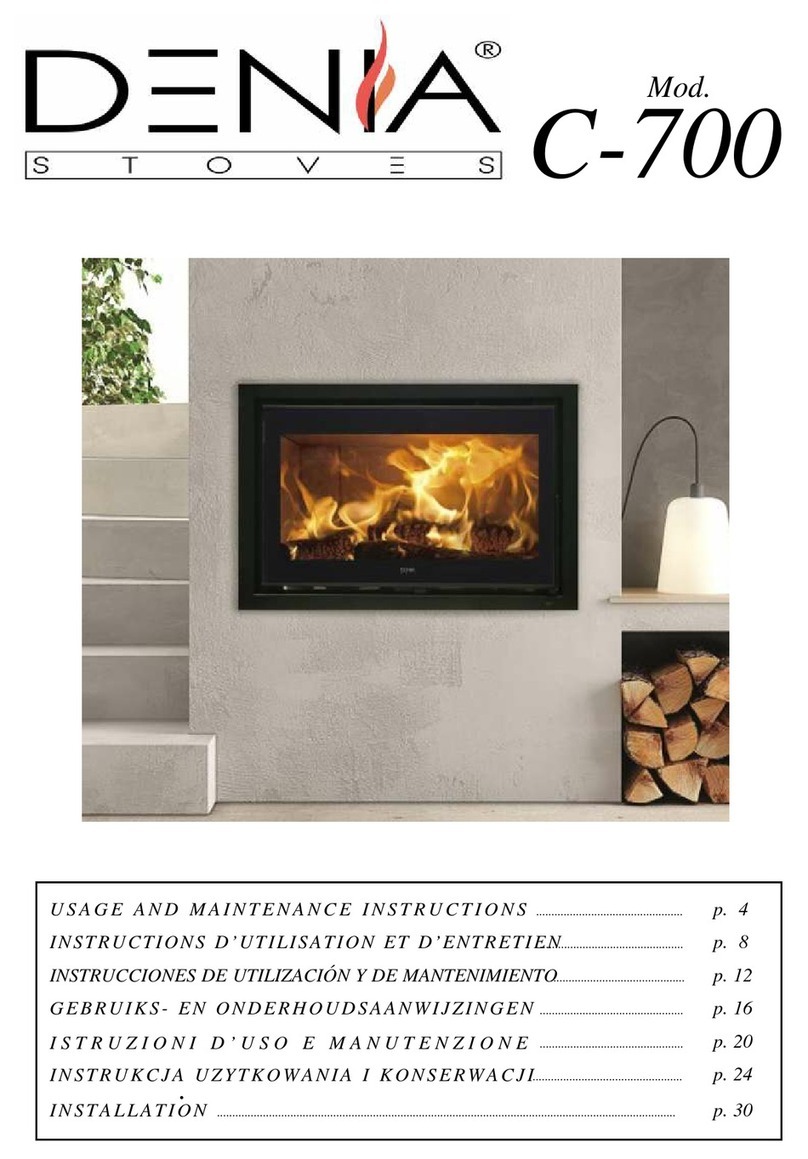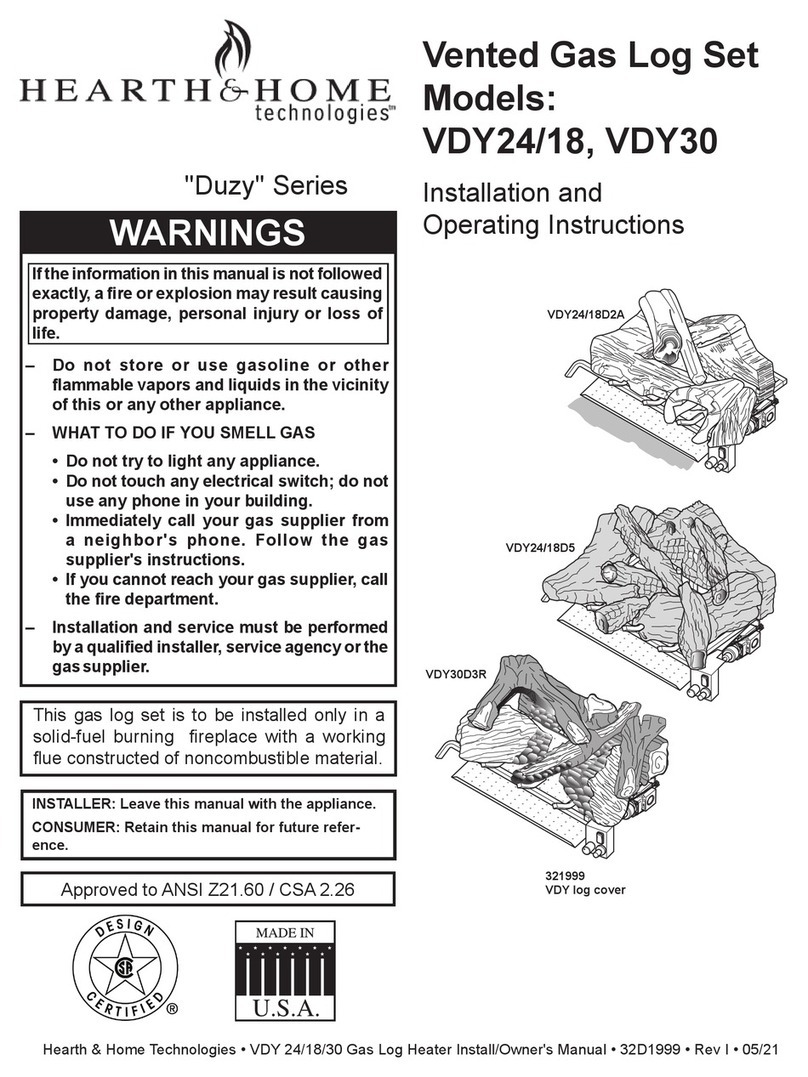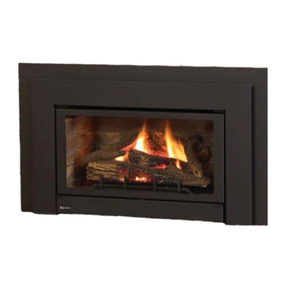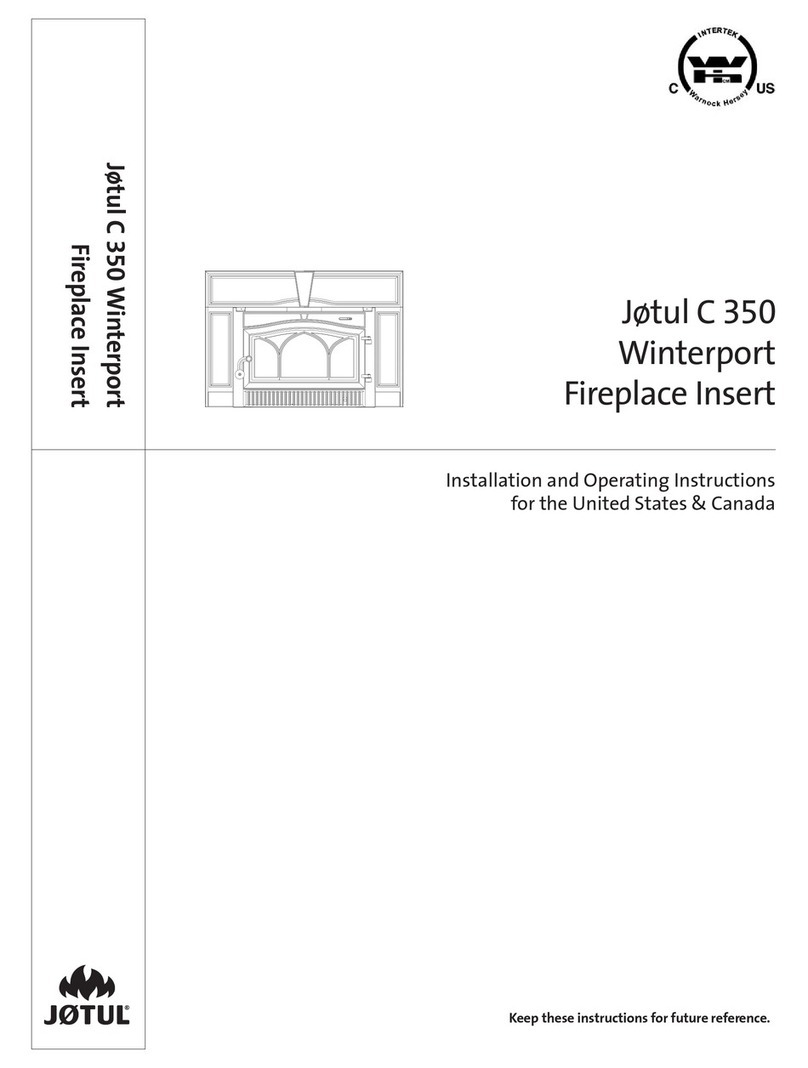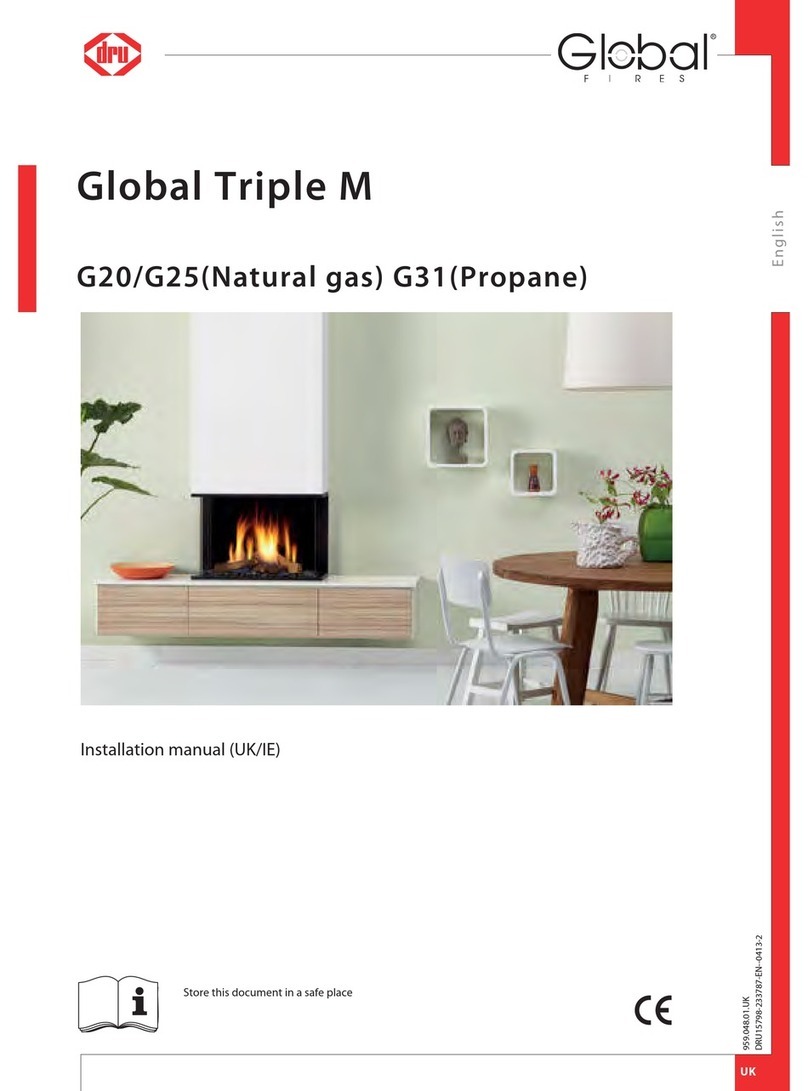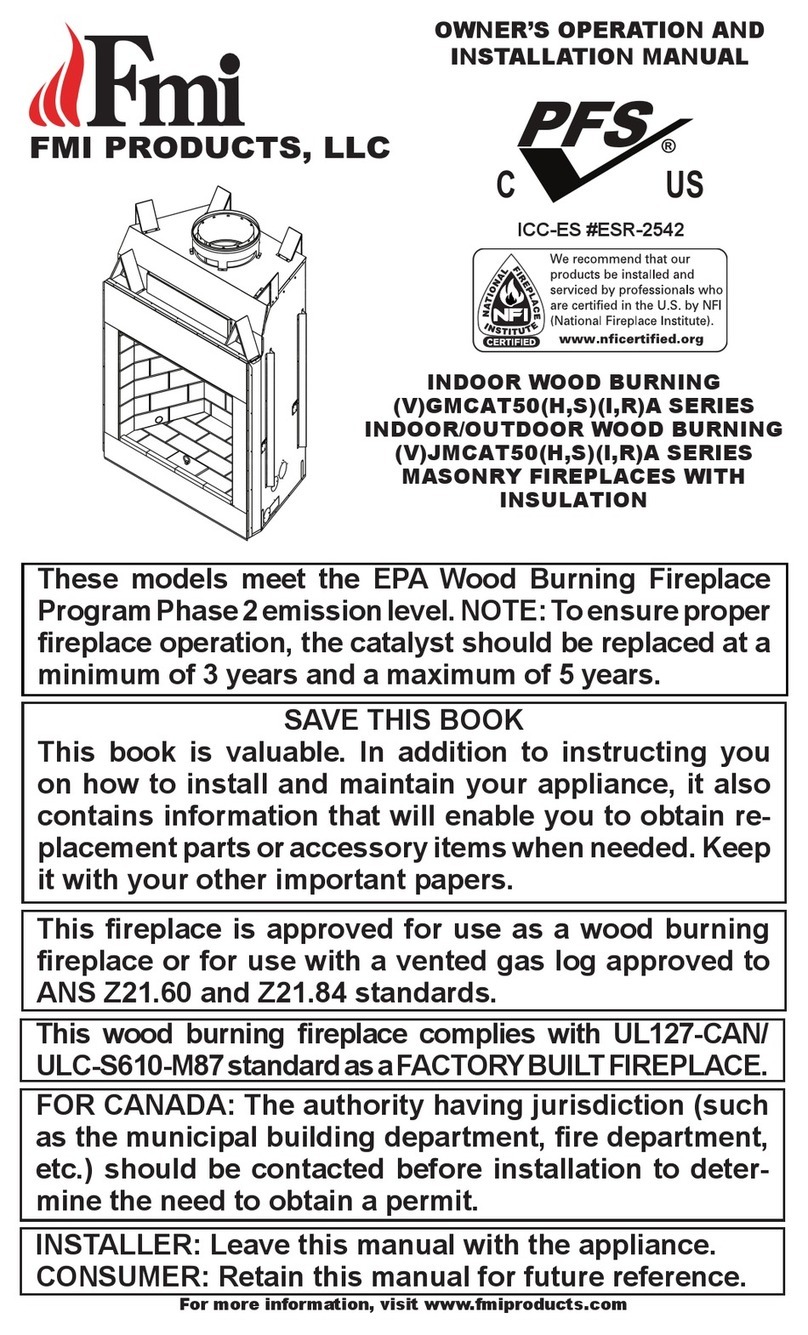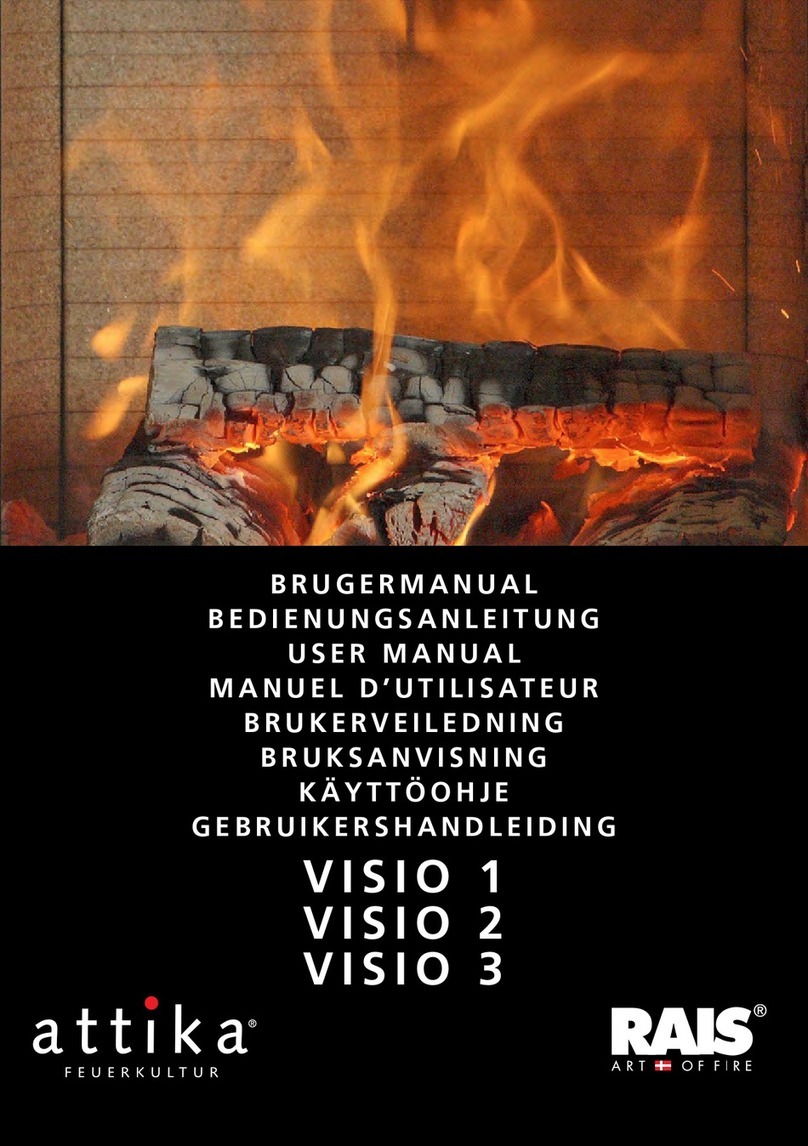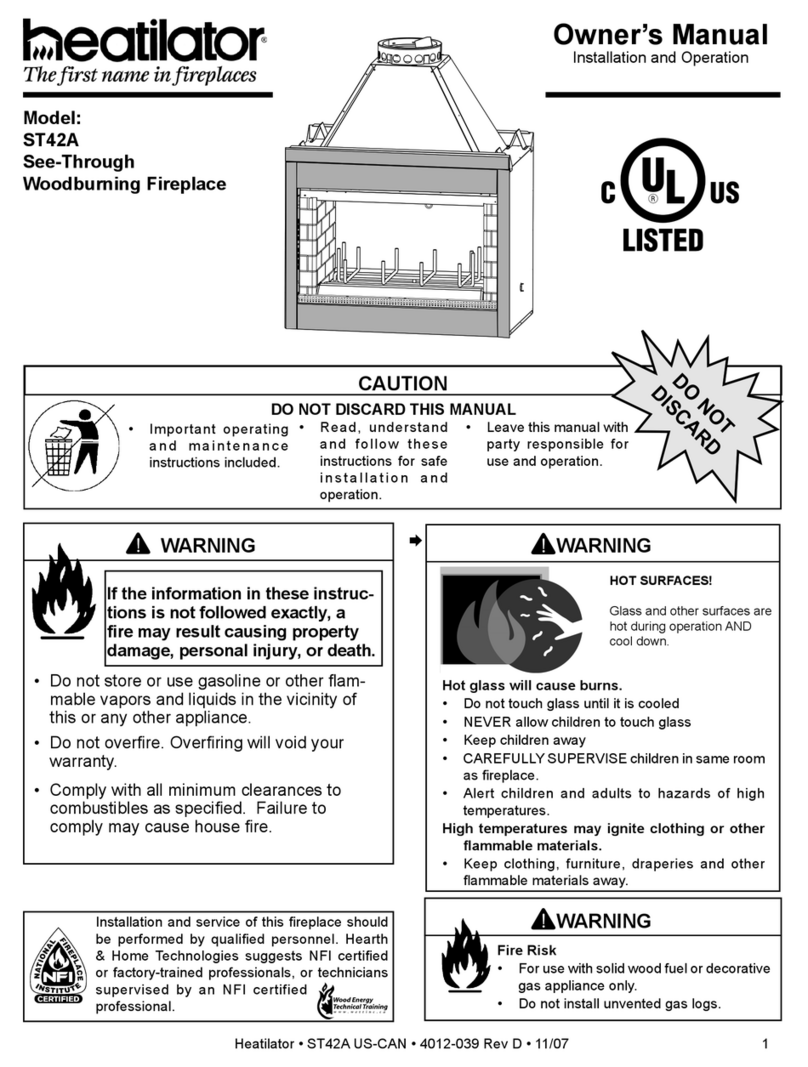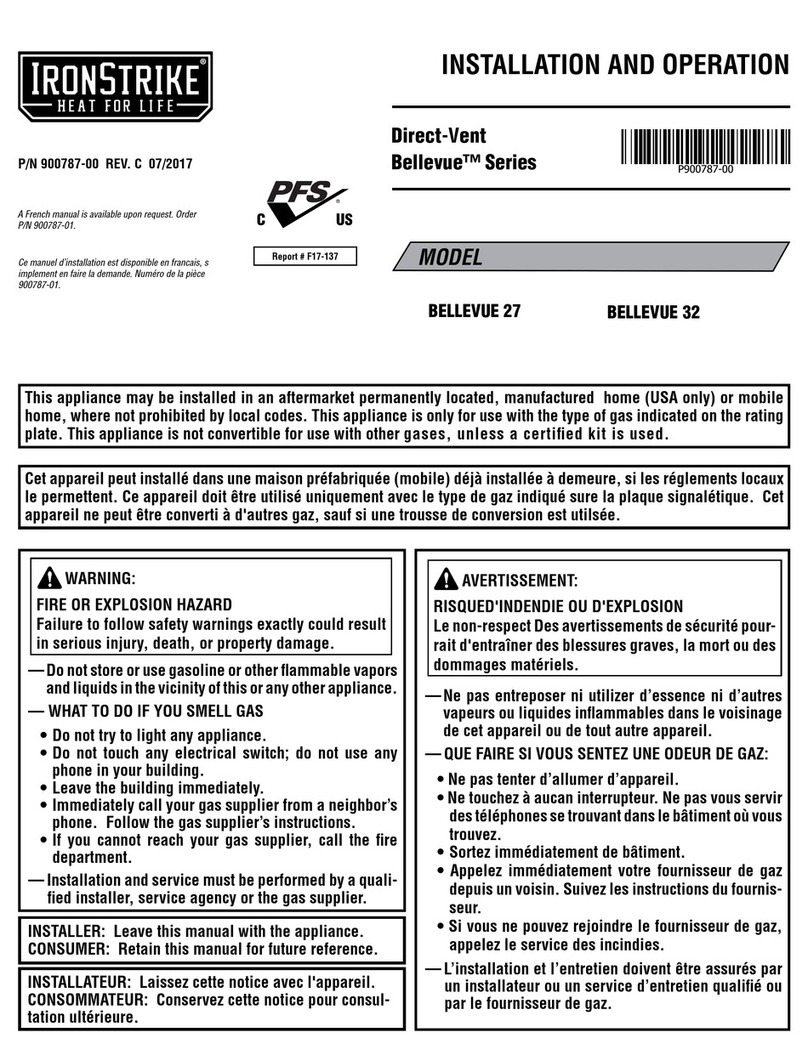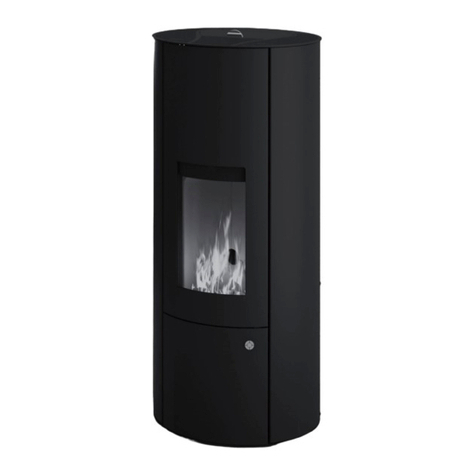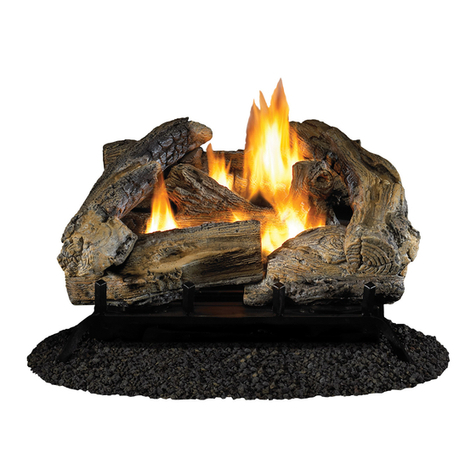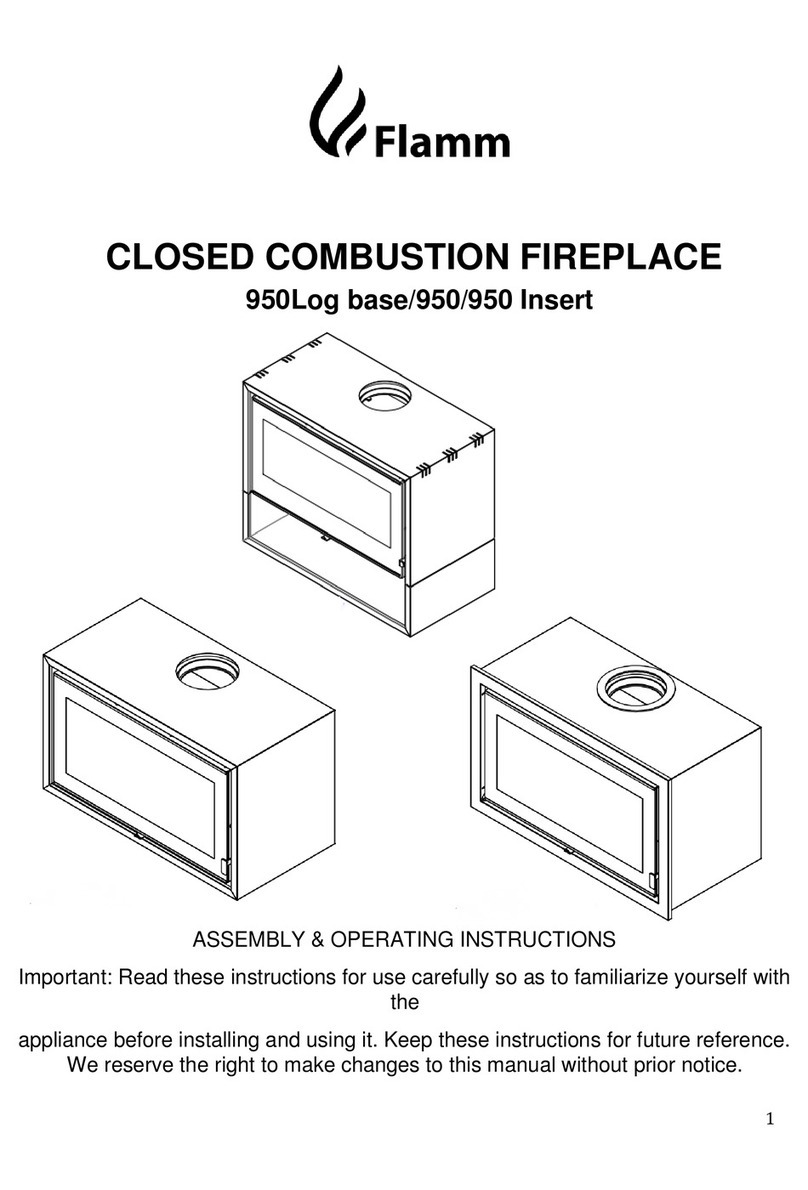18
fired (allowed to excessively heat on one or more occasions). Once removed, brush the baffle
using a stiff brush or wire brush to remove any deposits. Clear any debris from the upper parts
of the stove above where the baffles normally sit.
3. Inspect firebricks on both the sides, rear and base for cracks - (some are normal and not a
fault. Nor are they detrimental to the workings of the stove, however it is good practice to be
aware as any develop and over time if they worsen, they may need replacing). If you feel a
crack in the firebrick is just cosmetically unsightly it can be filled with a small amount of fire
cement.
4. Vacuum or brush out the inner stove box thoroughly. Particular attention should be given to the
air inlet controls, which can become obstructed.
5. Visually check that the glass is still making a good seal against its rope on the inside of the
door frame and that it’s retaining clips remain firmly in place to the touch.
6. Check that the door is making a good seal with the body of the stove all around (over time the
rope will flatten out and loose some flexibility - when this happens and when it is no longer
sealing fully all the way round, it needs to be replaced).
7. Blemishes or scratches to the paintwork can be touched up using a suitable high temperature
stove paint in a spray can. Ensure the stove is cool and clean before applying and follow the
paint manufacturer’s instructions.
8. Throughout the season, it is good practice to keep the stove in generally good clean order
which will prolong the life of serviceable components and enhance the experience you have
with your fire. NEVER wipe the stove in the early stages (prior to paint fully curing), as the paint
will be very soft and will damage easily.
9. To keep the outer body clean, simply dust over with a clean soft duster when cold. If there are
marks which cannot be removed with a duster, use a slightly moistened cloth very gently, but
only when the stove is cool and has not been in use. Then pat dry with absorbent paper towel.
Regularly vacuum soot and dust from around the inside of the door and around the glass and
rope seals.
10.If glass gets dirty on the inside from soot, clean with liquid ‘stove glass cleaner’ and a soft cloth
OR with an “Atmosfire Dry Wiper”, produced by Schott, (manufacturers of stove glass), and
available online. Do this as soon as possible once the soot appears, but only when the fire is
completely cool. Never use newspaper or soot or any other abrasive or cleaning method on the
glass.
11.FIREPLACE BODY:
a. The fireplace is finished with a heat-resistant paint, which can be cleaned with a soft
brush. Wait until the fireplace has cooled down before doing this. This finish can be
renovated with heat resistant fireplace paint, although the paint may not be an exact
match and it may be necessary to repaint the complete fireplace.
b. If the fireplace is purely ornamental, painting will provide a durable, attractive finish. If
the fireplace is used for heating, a high temperature heat resistant paint (available
from your hardware or paint dealer) must be used, in either aerosol or brush applied
form. Should rust become apparent, clean thoroughly with a wire brush and apply a
suitable anti-rust treatment.
c. During prolonged periods out of use, the air inlets should be left open and the door
left slightly ajar in order to circulate fresh air and discourage condensation from
forming which could encourage corrosion.




















